The CTMS-1TBI (nicknamed the “Dutch Three-Man”) is one of WWII’s forgotten tanks. It took no real part in the war but had a surprising career afterwards, considering it’s obsolescence.
This tank was a private design of the Marmon-Herrington company of Indianapolis, IN. In 1940, the Netherlands ordered 194 of these tanks. All were intended for use in the Netherlands East Indies colony, where they were supposed to form twenty-seven cavalry platoons, replacing horse units in the Dutch Java Army.
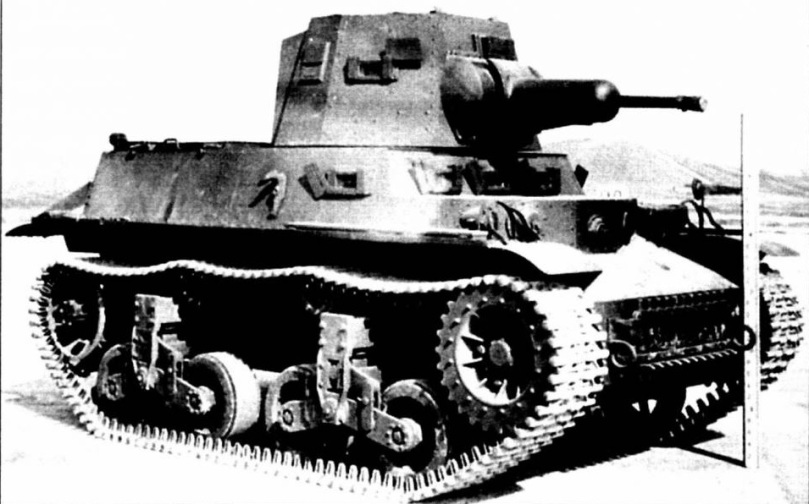 (This official US Army Tank & Automotive Command photo of WWII shows a measuring rod next to the CTMS-1TBI, illustrating optimal shot placement.)
(This official US Army Tank & Automotive Command photo of WWII shows a measuring rod next to the CTMS-1TBI, illustrating optimal shot placement.)
The CTMS-1TBI order was part of a grand 628-vehicle buy which the Dutch placed with Marmon-Herrington, including several other tank types, armored cars, trucks, and trailers. Unfortunately the company could not tool up fast enough and the Netherlands East Indies was overrun by Japan, and the Netherlands itself by Germany, before any were delivered.
Design
The CTMS-1TBI was designed to the pre-WWII notion of an “infantry tank”, a concept the war later showed to be badly flawed. It measured 13’10” long by 8′ wide by 8′ tall, and weighed 12 ½ tons. As it’s nickname implied, it had a three-man crew. It was powered by one air-cooled Hercules RXLD IL6 gasoline engine and had vertical volute suspension, with a top speed of 33 mph.
The main gun was a 37mm armor-piercing cannon designed by American Armament Corporation. Besides the coaxial machine gun, there were supposed to be two secondary M1919 machine guns, however many only had one installed. The armor was very poor. It was riveted steel ½” on the turret sides, hull glacis, and hull sides, and just ¼” elsewhere. This was barely sufficient to stop a WWII-era rifle bullet but not much else. There was no radio.
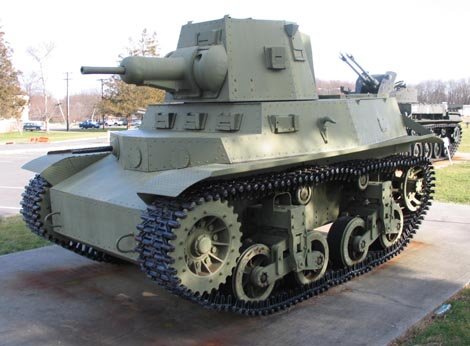 Besides it’s tactical deficiencies, the CTMS-1TBI had terrible (1mpg) fuel economy. On the positive side, it was easy to operate and maintain, ran surprisingly well in mud and sand, and was very cheap to build.
Besides it’s tactical deficiencies, the CTMS-1TBI had terrible (1mpg) fuel economy. On the positive side, it was easy to operate and maintain, ran surprisingly well in mud and sand, and was very cheap to build.
During WWII
With the Netherlands and the Netherlands East Indies occupied, Marmon-Herrington ceased production after the 62nd tank had been built. The Netherlands had pre-paid Marmon-Herrington for the whole order, which left the completed tanks in legal limbo. As the USA was still neutral, the US Army impounded the 62 tanks to prevent any claim by the puppet government in the occupied Netherlands.
Two were evaluated by the US Army which found the CTMS-1TBI unsuitable for any American use. The US Army transferred custody of the rest to the State Department to dispose of them as they wished.
After the occupation of their homeland and their East Indies colony, the only remaining free part of the Netherlands was it’s two colonies in the western hemisphere, the Netherlands Antillies islands in the Caribbean and Dutch Guyana (today the republic of Suriname) in South America. Dutch Guyana was important to American industry for it’s aluminum ore, and the State Department released 26 of the impounded CTMS-1TBI tanks for Dutch use there.
The tanks arrived in 1942, by which time the USA was already in the war. Their story there was unusual. As the Dutch forces were essentially marooned there with no hope of reinforcement, the tanks were manned by the Prinses Irene Brigade, which was composed of Dutch soldiers of any and every specialty plus some stranded Netherlands navy sailors.
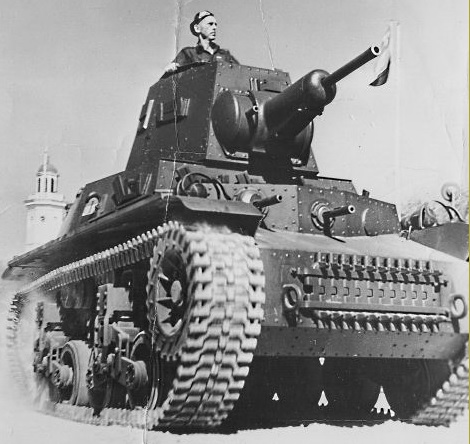 (CTMS-1TBI tank in Dutch Guyana during WWII.)
(CTMS-1TBI tank in Dutch Guyana during WWII.)
By the time the new crews were fully trained, any real danger of a German attack against South America had faded, and the tanks saw no combat. In late 1943, part of the brigade was transferred to Europe as the Netherlands government-in-exile wanted at least a token Dutch presence during the upcoming invasion of Normandy. This left the CTMS-1TBI force short of drivers and mechanics.
Some thought had been given to also sending a few CTMS-1TBI tanks to the Netherlands Antilles, and a US Army team traveled to Curacao to make preparations. However none were actually ever sent there.
POST-WWII SERVICE
(Surprisingly, at least one CTMS-1TBI was still in US Army inventory after WWII. This example (missing it’s secondary machine guns) was photographed at the Aberdeen, MD test facility in December 1946. By then, in comparison to tanks like the T-34 and M4 Sherman, it was hopelessly obsolete.)
Netherlands
In January 1946, the Netherlands government released all remaining WWII draftees from military service, including the remnant of the Prinses Irene Brigade still in Dutch Guyana. As these were the only Dutch troops trained on the tank, this basically gutted the force and several weeks later, the Netherlands army decided to inactivate the CTMS-1TBI tanks in the colony.
During the summer of 1947, the Cold War began to pick up and the Netherlands had second thoughts. It was decided to reactivate the CTMS-1TBI tanks in Dutch Guyana to keep more modern armor in Europe. However, the tanks had been stored in the open under tropical weather for a year and a half and were in bad shape. Not all of the 26 tanks could start their engines, and one had it’s turret rusted in place. One had a main gun rusted beyond repair and was converted into a turretless tow tank, a role it was often needed for to help it’s rusty brothers along.
By 1950, the CTMS-1TBI unit in Dutch Guyana was down to 16 operational tanks plus the tow tank.
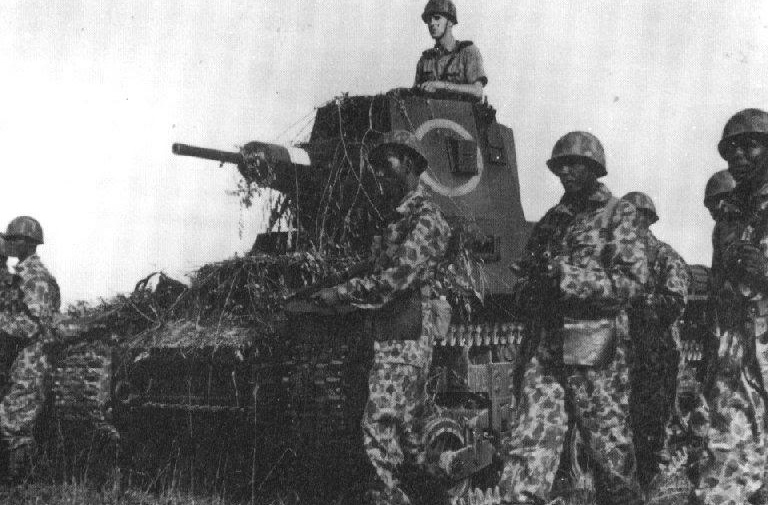 (A Netherlands army CTMS-1TBI tank in Dutch Guyana during the early 1950s. The alongside infantry, most likely recruited locally, are wearing WWII-surplus M1 pot helmets and USMC-style Pacific camouflage.)
(A Netherlands army CTMS-1TBI tank in Dutch Guyana during the early 1950s. The alongside infantry, most likely recruited locally, are wearing WWII-surplus M1 pot helmets and USMC-style Pacific camouflage.)
During the summer 1952 exercises in Dutch Guyana, only ten remained operational, and by 1954 this was down to eight. At the end of the summer of 1956, there were only two still in full running order, and these were being helped along by cannibalizing spare parts from others which had broken down. In early 1957, one of the two remaining CTMS-1TBI tanks broke down and the Netherlands army officially retired the type several days later.
Mexico
In December 1941, the USA gave Mexico four CTMS-1TBI tanks for evaluation. The Mexican army had the same low opinion as the US Army and no order followed. It’s unknown what happened to the four tanks, they may have been used as training vehicles into the mid-1940s.
Guatemala
During WWII, Guatemala was provided six CTMS-1TBI tanks under Lend-Lease. Very little is known about their service there, but they were reportedly unpopular with Guatemalan troops. In the Lend-Lease effort, Guatemala was classified as one of the “OLARs” (Other Latin American Republics) which was the backwater of the Lend-Lease project. It’s doubtful the USA asked for them back after WWII and they likely served until the late 1940s.
Ecuador
Ecuador was provided twelve CTMS-1TBI tanks via Lend-Lease during WWII.
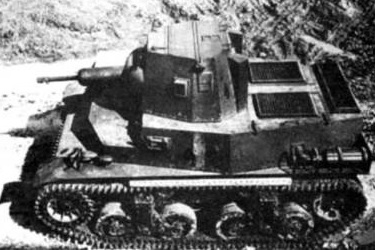 After the lease expired, the USA did not ask for them back and they were permanently absorbed into the Ecuadorian army. Ecuador was the only user which was satisfied with the CTMS-1TBI, as the little tanks were considered easy to operate and effective in jungle terrain.
After the lease expired, the USA did not ask for them back and they were permanently absorbed into the Ecuadorian army. Ecuador was the only user which was satisfied with the CTMS-1TBI, as the little tanks were considered easy to operate and effective in jungle terrain.
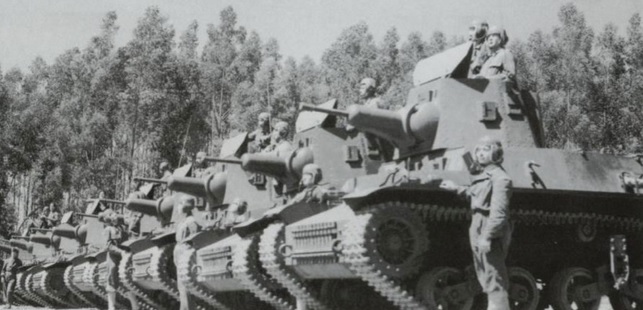 These tanks replaced some vehicles lost in the brief 1941 war against Peru. All twelve of the CTMS-1TBIs remained in service until 1959, by which time they had little realistic battlefield usefulness.
These tanks replaced some vehicles lost in the brief 1941 war against Peru. All twelve of the CTMS-1TBIs remained in service until 1959, by which time they had little realistic battlefield usefulness.
 During the 1960s, three of the tanks were marked for preservation and remain on display around Ecuador today.
During the 1960s, three of the tanks were marked for preservation and remain on display around Ecuador today.
Cuba
After Cuba joined the Allied side in December 1941, the USA transferred eight CTMS-1TBI tanks to the Cuban army. They were delivered in early 1942, at which time a team from the US Army Ordnance Department traveled to Havana to assist in training on the type. As Cuba was obviously not attacked during WWII, they saw no combat before 1945.
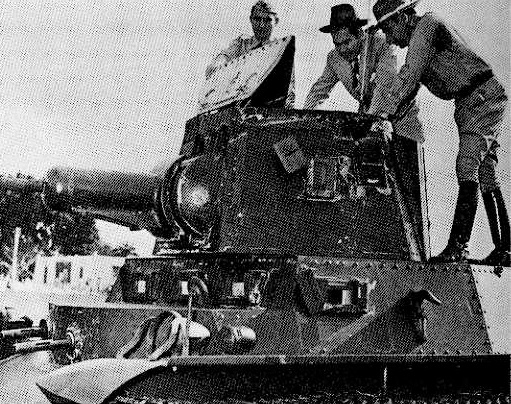 (Cuban CTMS-1TBI crewmen in the 1950s, wearing the pre-communist era uniforms.)
(Cuban CTMS-1TBI crewmen in the 1950s, wearing the pre-communist era uniforms.)
As the country’s political troubles picked up during the 1950s, the CTMS-1TBIs were used in combat against communist rebels. By 1958, they were seeing regular combat use in the infantry support role.
When Fidel Castro seized power in January 1959, five of the eight CTMS-1TBI tanks were still operational. The new communist army, FAR (Revolutionary Armed Forces), retained them for continued use. In 1960, these five tanks were modified with a Bofors QF 20mm gun in place of the American 37mm weapon. This gun had even less penetrating power, but either weapon was obsolete against Cold War-era tanks anyways, and the Bofors ammunition was plentiful on the worldwide arms black market. Along with the new gun, short-range radios were installed.
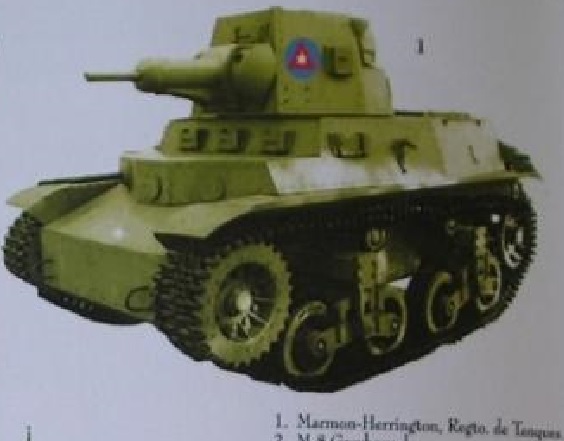 (A CTMS-1TBI tank of Cuba’s FAR with communist markings and the Soviet light OD green paint, as the tank would have appeared around the time of the Bay Of Pigs fiasco.)
(A CTMS-1TBI tank of Cuba’s FAR with communist markings and the Soviet light OD green paint, as the tank would have appeared around the time of the Bay Of Pigs fiasco.)
The CTMS-1TBIs were interspersed with M3A1 Stuart light tanks (also WWII veterans from the USA) in an independent tank regiment, normally serving as a training platform for future T-34 crews.
Contrary to some reports at the time, the five Cuban CTMS-1TBI tanks did not take part in repelling the April 1961 Bay Of Pigs invasion. During that brief conflict, they were held in reserve and not needed.
Cuba retired the CTMS-1TBI in 1962 as the engines were increasingly unreliable and spare parts embargoed by the USA. As Fidel Castro was known for his rants against “western colonialism”, this is somewhat ironic. The CTMS-1TBI had originally been designed before WWII to guard Holland’s overseas colonies, but ended it’s days serving in a 1960s anti-colonialist military.


Reblogged this on Brittius.
LikeLike
Is there any chance we will see an article about WWII equipment used in the Bay of Pigs invasion? Apart from a platoon of M41s and the threat of a very modern US invasion force, I think most of what was used was WWII-vintage.
LikeLike
[…] la post guerra. Jane’s World War II Tanks and Fighting Vehicles, The Complete Guide, Leland Ness. wwiiafterwwii.wordpress.com http://www.marmon-herrington.webs.com http://www.ejercitoecuatoriano.mil.ec the.shadock.free.fr/Surviving_Panzers […]
LikeLike